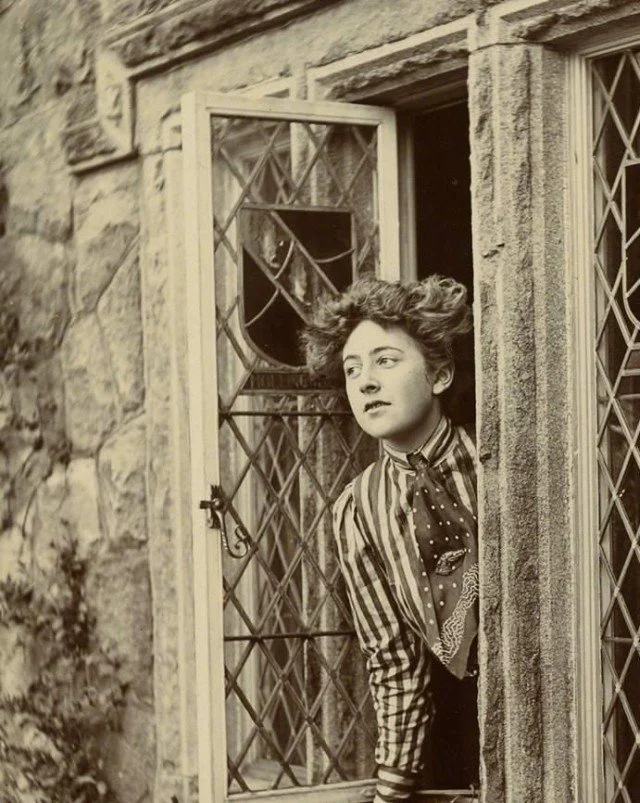Why The ‘Queen of Crime’ Will Never Die
/Introduction
Mysteries unveiled. Crimes unleashed. Writing unmatched. Agatha Christie was crowned the 'Queen of Mystery' for a reason. Known for her thrilling short stories, novels and plays, she has become one of the world's best-selling authors. Some of her famous works include The Mysterious Affair at Styles (1920), Murder at the Vicarage, The Murder of Roger Ackroyd (1926), and the play, The Mousetrap (1952).
Early Life
Born in 1890, England, her writing journey began with a mother’s push. Since she was homeschooled, her mother motivated Agatha to write and expand her horizons. Christie enjoyed the imagination that came with fantasy writing, as well as creating characters. This pushed her passion on towards her promising legacy.
Personal Events
In 1912, she became engaged to Archie, a soon-to-be pilot for World War I. She embraced motherhood soon-after. Christie's life would soon become unsettling, as Archie began having an affair with Nancy Neele, a friend of Agatha’s, in 1926. A little while later, Archie demanded Christie for a divorce, even during the recent death of her mother. In the face of this new reality, she disappeared. Chaos ensued, with everyone keen on finding the talented writer. She was found a few days later, allegedly forgetful of what occurred in the days she vanished. Some said she did it on purpose to seek vengeance on Archie’s infidelity, by causing madness. Others speculated her disappearance was due to a mental break, caused by her husband’s adultery and the loss of her mother. Ultimately, the divorce was finalized in 1928 and Archie went on to marry Nancy. Fortunately, Christie was able to find happiness again. She remarried in 1930 to Max Mallowan, to which they stayed together for 33 years.
Career Success
Despite Christie's tragic circumstances, she persevered through the pain. 'The Queen of Crime' published 83 bodies of work, with some written under her pseudonym, Mary Westmacott. She would eventually trump her male counterparts, raking in more success per publication. Having exceeded excellence, Agatha Christie was honoured by Queen Elizabeth II for her impact on literature. On top of that, The Mousetrap (1952) ran at the London Theatre for 21 years, breaking the record for the most consecutive shows. According to Guinness World Records, Agatha Christie holds the record for most-sold books in history, aside from the Bible.
Writing Style
How did Agatha Christie accomplish such greatness? It was in the power of her words. Combining minimalistic writing with complex, multi-layered character dynamics and the core elements of deception and secrecy, readers are naturally absorbed into the story. Dubbed the Queen of many things, she’s also a master of the red herring and unreliable narrators. She knew how to lure readers into a lie by skillfully diverting them, to then shock them with the truth. More-so, she conveyed personable experiences into her characters. There’s an authenticity that ropes readers into the story. Although most of her stories are focused around a main murder, she ensured to add other conflicts and subplots to enrich the piece.
Influence of Female Characters
In a time where women were socially oppressed, Agatha Christie became a pioneer for female writers, especially in detective fiction. Her female characters were strong-willed and brazen, which was seen as unusual behaviour for women in the 1920’s. Female characters, in most genres, were portrayed as ‘damsels in distress’ or victims in storytelling. But Christie adopted these strong female characters as leads. In crime fiction, the protagonists were usually men. In the mystery genre, the male detective would rely on logic and sequences of events to solve the crime. Christie, however, introduced psychology, the human condition and social dynamics into solving the mysteries and crimes. This propelled the narrative that women are not helpless. They’re capable, resilient and intellectual assets in detective work.
Career Obstacles
Christie wrote in a genre dominated by male writers and detective characters. Much of the female writers in crime fiction in the mid 20th century were cast aside, or were forced to publish under male pseudonyms. Unsurprisingly, Christie faced a lot of backlash and criticism for her work in the beginning. The Twenties weren’t ready for a female crime writer with female protagonists, until her prowess could no longer be ignored.
Conclusion
Agatha Christie was a trailblazer for female writers, dismantling the misogynistic narrative towards the physical and intellectual capabilities of women. Modern female writers, such as Lucy Foley and Ruth Ware, keep Christie’s spirit alive by mimicking the atmosphere, tone and sinister themes of her writing. Had it not been for Christie’s bravery in an era of misogyny masked as tradition, female literature would not be the same. She’s not only a pillar of female literature, but one of writing in general.
Ana M. Quinn is a writer and storyteller based in Ottawa. She explores the topics of femininity, love, loss everything in between with poetry, literary fiction and narrative nonfiction. Her passion for writing began in the 5th grade, where she picked up a pen, wrote a poem and never stopped. She's used writing as a therapeutic escape, as much as a form of artistic expression. When she's not writing, she loves to read, coffee shop-hop, spend time with her two cats and play musical instruments. Even then, she's still songwriting!





